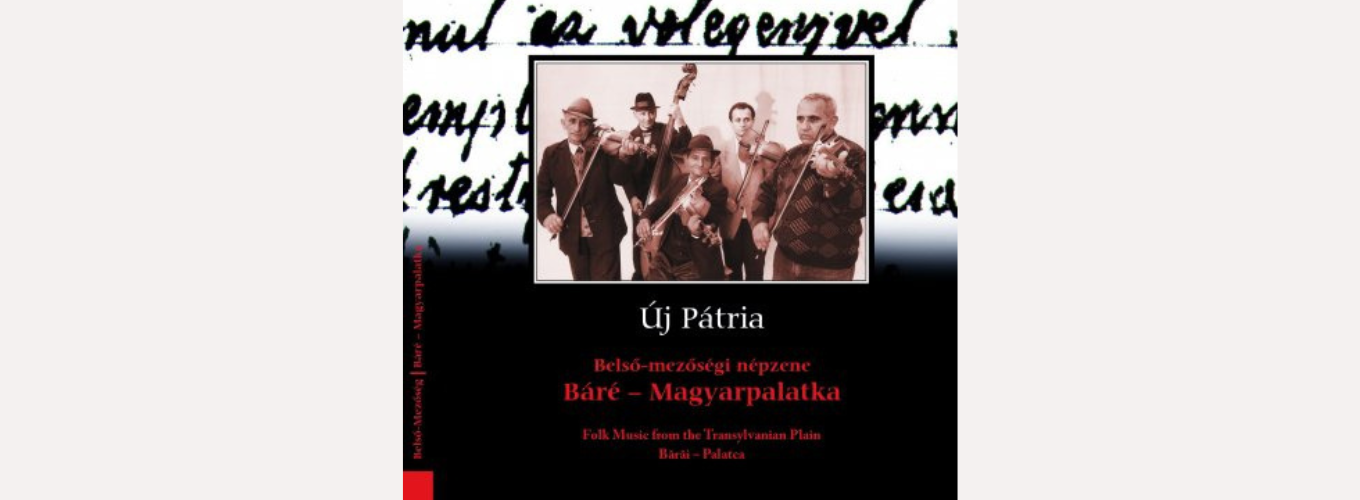
Mezőségi népzene - Báré - Magyarpalatka - Új Pátria
Gypsies came to Transylvania in the sixteenth century, and by the beginning of the eighteenth century had almost entirely taken over the musical entertainment profession. The Gypsy musicians are generally Transylvanian Hungarian Gypsies, with Hungarian or names of Hungarian origin, who observe the predominant religion of the village where they live. Depending on the ethnic majority of the village, they speak either Hungarian or Romanian and are likewise either Calvinst, Catholic, Evangelist or Orthodox. The musicians on this recording are originally from Magyarpalatka (Palatca) and are Calvinst, „Hungarian” Gypsies. With the exception of the double bass player, who understands but doesn’t speak it, they no longer speak Hungarian. According to Péter Árendás’ field work; in Palatka, in the past there were three main families of musicians: the Kodoba, Mácsingó and Radák families with their numerous descendants. They provided the music at dance events not only in Palatka, but also in the neighboring communities of Vajdakamarás, Visa, Magyarszovát, Mocs, Kötelend and Mezőkeszü. The most well known musicians in Palatka, because of the influence of Zoltán Kallós’ work and the dance house movement, are members of the Kodoba family. Because one village can’t really support too many musicians, many from the Mácsingó and Radák families have moved away. Members of the Mácsingó family have moved to the nearby villages of Báré and Déva. On this recording, one of the prímás-es (lead fiddlers), „Gyurkuca” lives in Báré and the other, Péter, lives in Déva. Gyurkuca’s son, Náci, has recently moved back to Palatka.
1. De-a lungu, ritka és sűrű csárdás 6 ' 16”
De-a lungu, slow and fast csárdás
2. Keszüi négyes, sűrű magyar és verbunk 10' 22”
Foursome and two men's dances from Keszü
3. Ha megindul a nagy gőzös… (keszüi katonanóta) 1' 30”
If the big steam engine starts to leave, let it go... (soldier's song from Keszü)
4. Katonakísérő és ritka csárdás 4' 38”
Music for sending off the soldiers and slow csárdás
5. De szeretnék az erdőben fa lenni 2' 24”
I'd like to be a tree in the forest
6. Halottkísérő a románoknak, de-a lungu 4' 32”
Funeral music for Romanians, de-a lungu
7. Cântecul cununii (Búzakoszorút kísérő) 4' 30”
Music for end of the wheat harvest (Romanian)
8. Cigány virrasztóének és lassú cigánytánc 4' 19”
Gypsy wake song and slow Gypsy dance
9. Keszüi magyar tánc („a Bikáké”) és sűrű magyar 7' 58”
Hungarian dance and fast dance from Keszü
10. Cigánykeserves és szökős 5' 05”
Gypsy lament and Gypsy couple dance
11. Magasan repül a daru... 1' 15”
The crane flys far overhead
12. Lassú cigánytánc, ritka és sűrű csárdás 19' 16”
Slow Gypsy dance, slow and fast csárdás
ADATKÖZLŐK / PERFORMERS - INFORMANTS
MÁCSINGÓ György „Gyurkuca” (1937) - hegedű / violin
MÁCSINGÓ Péter (1944) - hegedű / violin
MÁCSINGÓ Sándor (1939) - 3 húros brácsa / 3 stringed viola
MÁCSINGÓ Náci (1965) - 3 húros brácsa / 3 stringed viola
KODOBA Károly „Ica” (1924) - nagybőgő / double bass
HORVÁTH Anikó (1939) - ének/ voice
TÓBIÁS Dániel (1928) - ének/ voice
A felvételek a Fonó Budai Zeneházban készültek
1997. november 3–7. között.

